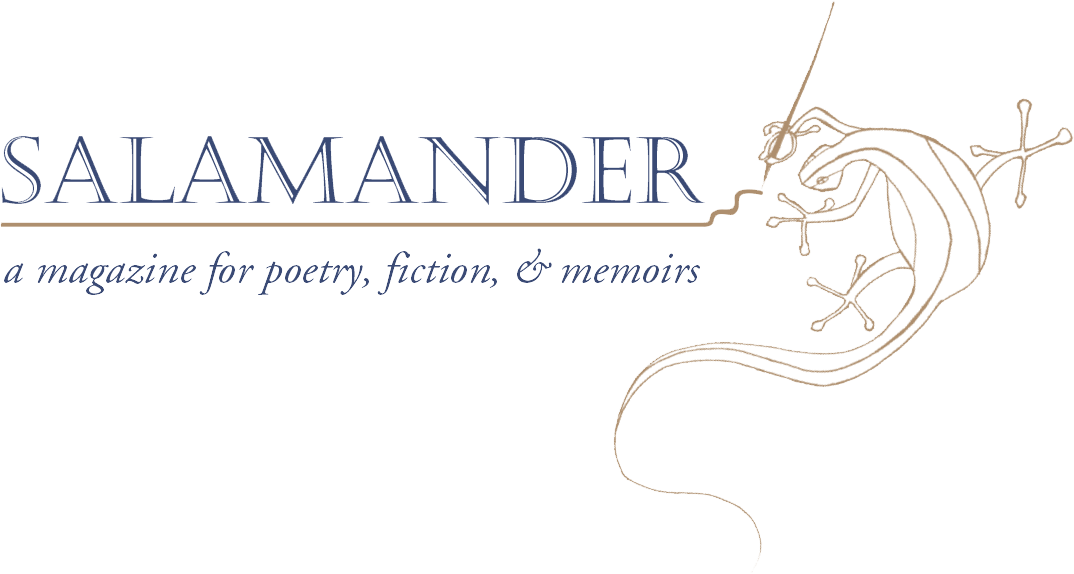Every house in the village looked identical, which made it difficult for Diya to decide where to knock for help. In the absence of any distinguishing features—a worn jute welcome mat; cane rocking chairs on the front porch; a pink tricycle beached on its side out front—she had no means by which to form a snap impression as to who behind each closed door might be warm, hospitable, safe. She’d bitten her tongue when the front tire on the scooter she’d been driving reached its final stage of deflation. Her entire morning’s journey had been accompanied by its quiet hiss, especially when she passed the outermost suburbs and vehicles, humans, and animals became more scarce, just palms and dried up streams and bugs flying into her helmet’s visor to keep her company. She could still taste the blood in her mouth—fresh, metallic, signaling emergency.
Behind her, she could hear a cluster of desiccated palms rustling, their trunks stooped as if broken, finally, by a lack of water, of care. Diya felt like the only living creature for miles. On first—even second or third—glance the village seemed not an inhabited community but a small assemblage of abandoned buildings, several homes arrayed on lanes shooting off from the main road that carried most people to and from elsewhere.
Diya, too, had been on her way elsewhere, about half an hour further down the road to an NGO that provided employment for women skilled in a near-extinct form of embroidery. One of the organization’s international donors had arranged a professional photoshoot for their new website, which Diya had been hired to conduct according to very specific instructions: meticulously posed candids of the women at work; macro-zoomed shots of fabric tight enough to see every careful stitch; hands; needles; mirrorwork; cowrie shells; spools of thread. The donor representative she’d been in contact with kept calling the women’s work a dying art, as if the women weren’t alive and practicing it. Diya could read between the lines. Her task was to produce images from a future in which the work had already died and then been miraculously resurrected.
Diya suspected, perhaps, that she’d been contacted for the job on the basis of an interview she’d done recently with the curator of an email newsletter focused on various creatives’ processes. The curator’s first question, delivered without any preamble, was: what is/are your preoccupation(s)? Though Diya understood the intention behind the question, its value, it felt intrusive, like a demand to enter the sheltered space of the innermost room of her brain, a request to publish her unfiltered internet search history from the past year. She allowed as much silence to pass as seemed socially acceptable before deciding to tell the truth.
My primary motivation, she told the curator, is to capture the ineffable. Perhaps my only distinct memory of my mother is from when I must have been around five; when she’d flip the light switch off at bedtime and I balked at the darkness, she’d tell me not to worry because I was never alone, there were always ghosts all around me. ‘Just look,’ she said, ‘you’ll see them, and you can tell me about them.’ And I did look, and it took a while, but I did see them everywhere, often not in the forms I would have expected. Ghost as presence, not absence, right? A material remnant. What inhabits the space, not what’s lost from it. So I’m not interested in the double exposure, really, but rather the single image that represents both realities, simultaneously death and rebirth… Here Diya had trailed off, stricken at having revealed so much, and tacked on the added hedge, … if that makes sense.
When the interview was published, she saw that she’d missed a note somewhere about her answers being condensed for inbox digestibility and attention spans. What were her preoccupations? A short, bulleted list:
- ghosts
- mothers
- materials
- the multiverse
- reincarnation
*
